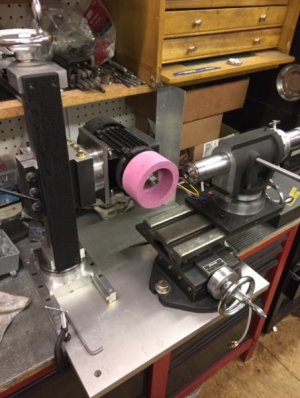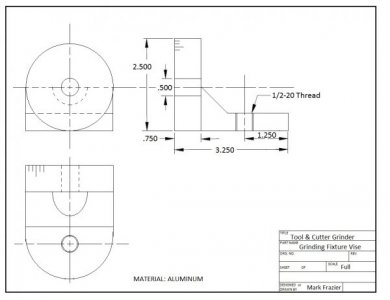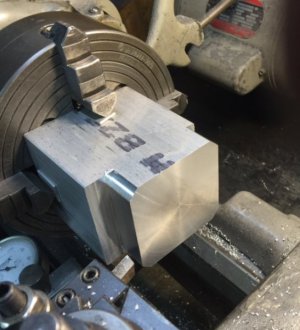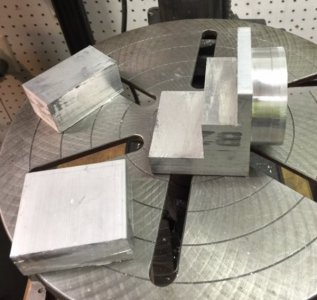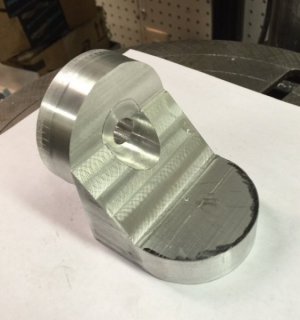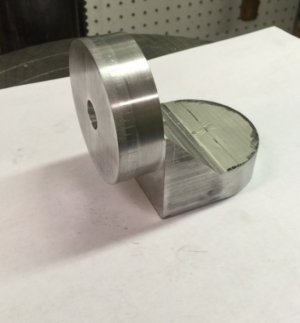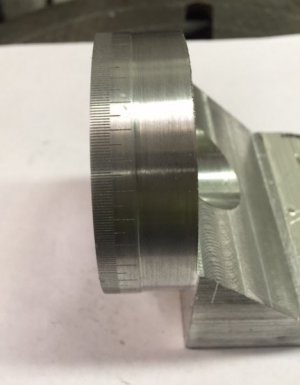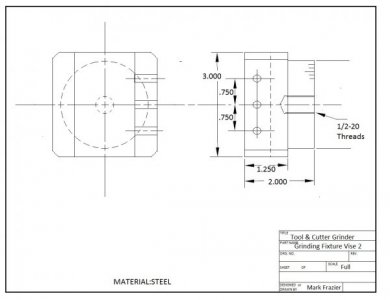wrmiller, Yes I am trying to get to that point, in fact, I have been trying to get to that point for over forty years

I never thought of that Bill Gruby, but you are right. Every time I master something I set the bar a little higher.
Nelson, the only problem is the shaft has to be kept as short as possible. The shorter , the easier to control flex and runout.
I find the details are taking more time than the actual machine build. But I think it works that way with every thing.
I painted the screw support bar on the column and it looks much better.
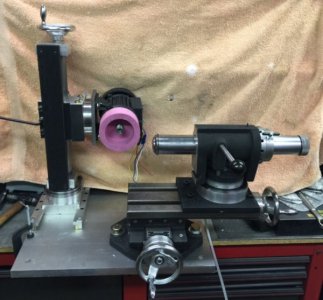
I also got the air bearing mounted. It was designed to be on a table with a center slot. It is held in place by a 1/2-13 bolt down through the center and had 10 mm dowel pins 180 degrees apart on the bottom. My table does not have a center slot so I made an adapter plate from 1/2" thick aluminum ( the air bearing body and base are cast aluminum). I drilled holes in the plate to match the bottom of the bearing base as close as possible ( this was difficult as it had to be as exact as possible).
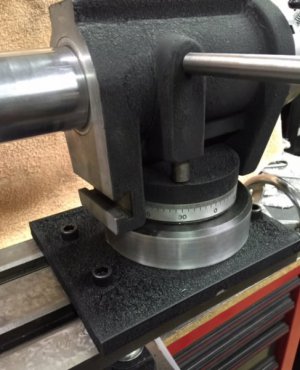
I then drilled and reamed the dowel holes to .500 and inserted the dowels. I must have done good because the bolt hole is reamed at .500 and the bolt went right in.

I drilled four .375 holes for the bolts to go in the four T nuts that anchor the assembly to the table. AND NO, there is no paint on the plate under the bearing. ( I masked that area off

).
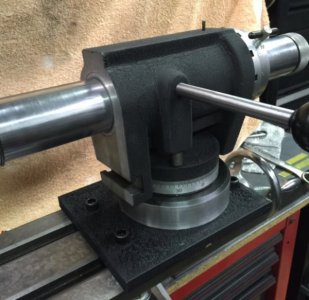

This is how the grinder is shaping up so far. I'm not putting down the Bonelle, it is a fine machine and works well, but this grinder will have half the hours building and is much more superior in my opinion.
I am waiting for the control box for the electrics. It is coming from China ..... some day...
The column and grinding head on this machine just blows me away. it is massive, very solid and works very well. I am very impressed with this design. I hope it grinds as well. I am starting to work on the fixtures while waiting for parts. I will be making a three jointed articulating vise fixture, a spindle and tool height gage, and a work head for the ends of end mills.
Keep watching.....more to come.
